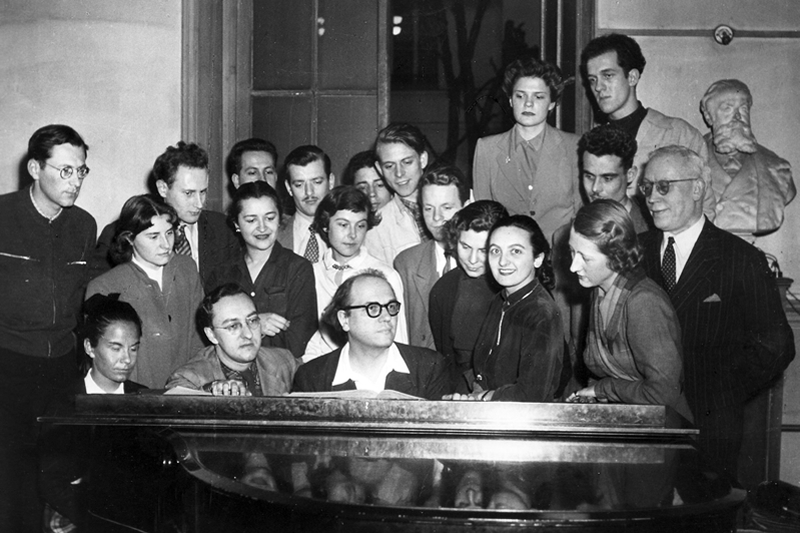
STERNKLANG – Ergänzung Juli 1995
Stockhausen Complete Edition on CD
Since 1991, a complete edition of all recordings in which Karlheinz Stockhausen has personally participated is being released on compact discs. Each CD in this series is identified by Stockhausen's signature followed by an encircled number. The numbers indicate the general historical order of the works.
Stockhausen realised the electronic music and participated in these recordings as conductor, performer, sound projectionist, and musical director. He personally mixed down the recordings, mastered them for CDs, wrote the texts and drew the covers.
- The compact discs may be obtained from the Stockhausen-Verlag: Kettenberg 15, 51515 Kuerten, Germany (www.stockhausenCDs.com).
Karlheinz Stockhausen
STERNKLANG – Supplement July 1995
During a performance in a hall which has the dimensions of, for example,
30 x 60 m and a long reverberation time – when standing in front of one of
the 5 groups – too much from the neighbouring groups is heard. Therefore a
larger hall must be chosen which has a short reverberation time.
In addition, the percussion in the middle of such a hall must often be
played too loudly in order to be heard by all groups. This dynamic level is,
however, too loud for those listeners who are near the percussionist. Therefore,
it is recommended that – also for performances in a hall – the percussion
be picked up by a microphone and played over 5 monitor loudspeakers
on the podiums of the groups, so that the percussion need not be played too
loudly. The musicians should be able to adjust the volume of the monitor
loudspeakers by themselves.
In order to arrive at a dynamic balance throughout, the individual group rehearsals should take place using the same sound equipment as in tutti rehearsals, with one sound projectionist per group operating the mixer. It is best for each group to have a sound projectionist who controls the dynamic balance using a small mixer, which is situated as low as possible at a slight distance in front of each group in the middle of the stereophonic loudspeaker play-back. The sound projectionist sits (also during the performance) within the semi-circle which is cordoned off to keep the audience at a suitable distance from the musicians. He has no podium.
For the tutti rehearsals, an intercom system must be available so that the musical director can make corrections to all groups over their monitor loudspeakers from the middle of the hall.
Although in the score on page 11 below 4a) it is explicitly said that the combinations
must follow one another in uninterrupted succession, through
the giving of entries from one model leader to the next, often a pause is
made between the end of a combination and the beginning of the following
one. This must by all means be avoided.
The composition STIMMUNG is authoritative what concerns how to
connect the models.
Before the beginning of an S-model, the previous combination should be continued until the S-model begins, if it is so notated in the form-scheme.
In the 1980 addendum, the text on page 7, section 27 is incomplete. The following sentence must be added:
After IV became subito  , II played an
, II played an  section. II then became
section. II then became  ,
and then I played an
,
and then I played an  section.
section.
The runner from III...